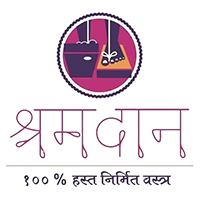If you check social media, most fitness influencers and yoga trainers use rubber to TPE mats. As we see them all over social media, it has become our default option, but do we really need these fancy options?
In Bharat, individuals have been practicing yoga for more than 5000 years now and most yogis practiced asanas on cotton yoga mats. These mats absorb sweat, are breathable, and contain natural fibres.
Rubber mats may feel modern, but they are not how yoga started. The deeper truth is this: cotton isn’t outdated, it’s simply under-explained.
The Roots of Cotton Mats in Classical Practice
Yoga practices have been going on long before existence of PVC material. Ancient yogis sat on surfaces like:
- Kusa grass
- Cotton mats
Yoga has never been about fancy mats and equipment. Yogis focused on breath, asanas, channelling energy, and connection with the ground.
A cotton yoga rug does not provide cushioning or synthetic grip. It is a simple and breathable layer between you and the ground.
The Hidden Issues with Rubber Mats
Synthetic mats are less about yoga and more about the aesthetics and convinience. It’s colorful, gripping, has modern designs and comes with the ‘premium feel’. However, rubber mats have some disadvantages people don’t talk about:
- The sweat and smell stay trap on the mat’s surface
- Some mats contain chemical grip coatings
- They start releasing microplastics with time
- They are difficult to wash.
Even the high-quality mats that are recyclable, cannot absorb sweat which leads to odour over time. While these mats might work in studios with air conditioners, they are not suitable for outdoor use.
Why Cotton Mats Feel More “REAL” to the Body
Pure cotton yoga mats don’t have artificial grip. The more you sweat and warm up, the more natural traction you feel. This is the primary reason why most yogis preferred cotton mats.
Cotton is:
- Breathable
- Absorbent
- Natural against skin
- Cooling in hot rooms
You don’t feel that plastic film between you and the ground. You feel yourself. And that changes your practice posture in subtle ways.
Unlike synthetic mats which provide cushioning, using simpler cotton yoga mats give you
- Stronger palms and fingers
- Better weight distribution
- Higher sensory awareness in feet
- True balance, not assisted balance
It’s not a mat that compensates for weakness. It’s a mat that invites uncomfortability, making you stronger.
How to Choose a Good Cotton Yoga Mat

Not all the cotton mats can be used for yoga purposes. When looking for the best cotton yoga mat, here are some of the few things you need to take into consideration.
-
GSM (fabric weight)
Higher GSM means denser weave which leads to better grip and durability. The ideal range is 1800–2500 GSM for yoga mats.
-
Weave type
Pit-loom or tightly woven durrie style gives the best firmness for your yoga practices.
-
Natural dyes
Use yoga mats made with natural dyes as they are gentler on the skin.
-
Size
Choose at least 26–28 inch width (traditional mats were narrower, but modern bodies prefer wider space).
-
Care
Shake and air-dry your cotton yoga mat after each use, and hand wash it gently with mild detergent when needed.
Best Shop to Buy Cotton Yoga Mat in Bharat

One of the best shops to buy cotton yoga mats online is Shramdaan. We are a 100% sustainable clothing and accessory brand that is on a mission to revive the lost skill of handloom and hand weaving.
We follow ethical practices like using 100% organic cotton that is farmed using less water and chemicals and natural dyes. Even with traditional weaving methods, our yoga mats are very durable and perfect for all yoga practices like pranayama, hatha yoga, hot yoga, and more.
Along with our yoga mats, you can also check out our hathkharga sarees, kurtas, shirts, dupattas, and more.
Final thought
It's time to get back to traditional ways and make cotton mats mainstream. They are better than synthetic mats in most aspects. They are a way for the modern mind to return to an older, wiser form of practice — where the mat doesn’t overpower the body but simply supports it.
Visit Shramdaan to learn about their yoga mats and other clothing options.
FAQs
1. What is the healthiest material for yoga mats?
Natural materials like organic cotton, and natural rubber (not synthetic) are the healthiest because they are skin-safe, chemical-free, and biodegradable. Cotton, however, stands out as the most breathable and naturally hypoallergenic option.
2. Is cotton good for hot yoga?
Yes — cotton performs best in hot yoga because it absorbs sweat and becomes grippier as you heat up. if you use synthetic mats that are waterproof, all the sweat will be stored on the surface making difficult to perform yogas.
3. Does a cotton yoga mat provide good grip?
Cotton mats offer excellent sweat-activated grip, which means the more you move and warm up, the better the traction becomes. On dry days, you can place it on top of another mat or lightly mist it for instant stability.
4. Is a cotton yoga mat easy to maintain?
Yes — cotton is washable and odour-resistant, so it stays fresh even with regular sweaty sessions. A simple hand wash or gentle machine wash keeps it clean without harmful chemicals.





